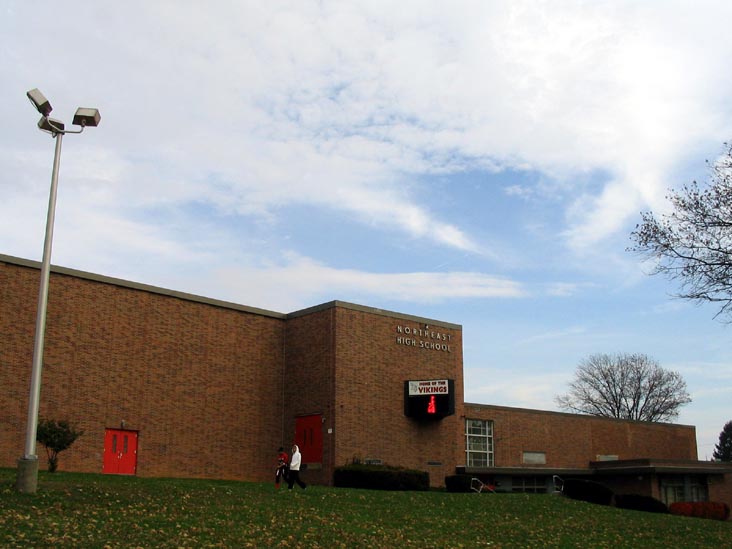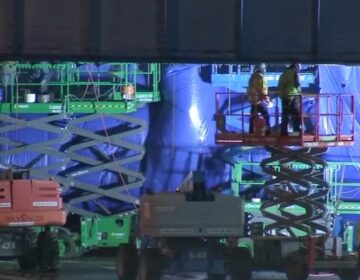Schools bursting at the seams in the Northeast

For most Philadelphia neighborhoods, plummeting public school enrollment is a fact of life. In Northeast Philadelphia, however, there is a different problem altogether: too many students, and too few seats.
Overcrowding and a perceived lack of investment in Northeast schools, particularly the behemoth Northeast High, were the dominant topics yesterday evening as school district officials met with local parents, teachers and students as part of a series of meetings on the district’s facilities master plan.
About 60 community members attended the meeting – the eighth of 17 scheduled sessions around the city – which was held in Northeast High’s well scrubbed but clearly aging auditorium. At most of the sessions, the focus has been on closing schools (the district has identified nine schools for potential shutdown). In the Northeast, though, the district hopes to build new schools.
Citywide, district schools use about 67 percent of available classroom space, according to district tallies of enrollment and capacity. But in Northeast Philadelphia, the figure is 94 percent, well above the 80 percent the district considers ideal.
That number could grow higher still, in light of the mass school closures now planned by the Archdiocese of Philadelphia, which includes a number of schools in the Northeast.
“There’s going to be an impact on public schools, there’s no question about that,” said Acting Superintendent Leroy Nunery.
Danielle Floyd, the schools official managing the facilities master plan, said the district would like to embark on a major building effort in the northeast, including a pair of new high schools, a pair of new K-8 or middle schools and a replacement building for Austin Meehan Middle School, among other projects.
But as real as those needs might be, Floyd said, a lack of funds may prevent the district from embarking on those projects.
“I want to be very clear, we have some challenges in being able to meet those goals,” Floyd said.
Northeast High social studies teacher Chris Frank asked district officials why there had been so little district money spent on his school. Teachers and students had learned to cope with the crowded conditions, he said, but they could do much more with better labs and more modern facilities.
“We haven’t seen much investment in the physical plant here. It looks much the same as it has since 1954,” Frank said at the meeting. “We are doing a great job and our students are succeeding, and we don’t see the level of investment from the school district that reflects that.”
His remarks were met with applause.
Floyd said that the district had made some investments in the school that couldn’t easily be seen, such as elevator repairs, and a network technology overhaul, investments she described as “behind the wall stuff that’s necessary to keep the building going.”
Samantha Branam, the mother of a kindergartner at Rhawnhurst Elementary School, asked district officials about the presence of asbestos at the school, which she worried was making her son sick. Floyd responded by saying she would set up a meeting with parents at Rawnhurst to address the asbestos concerns.
As at all other facilities meetings to date, a member of the School Reform Commission was in attendance. This time it was Chairman Pedro Ramos, who continued the SRC’s nascent attempts to reach out more to the community it serves by holding an impromptu Q-and-A with Northeast High students after the meeting.
The next facilities master plan community meeting will be held tonight, at 6 p.m. in West Philadelphia at the High School of the Future, 4021 Parkside Avenue.
This report is a product of William Penn Foundation funded reporting partnership between Plan Philly and the Notebook.
Contact Patrick Kerkstra at pkerksra@planphilly.com or Twitter.com/pkerkstra
WHYY is your source for fact-based, in-depth journalism and information. As a nonprofit organization, we rely on financial support from readers like you. Please give today.





